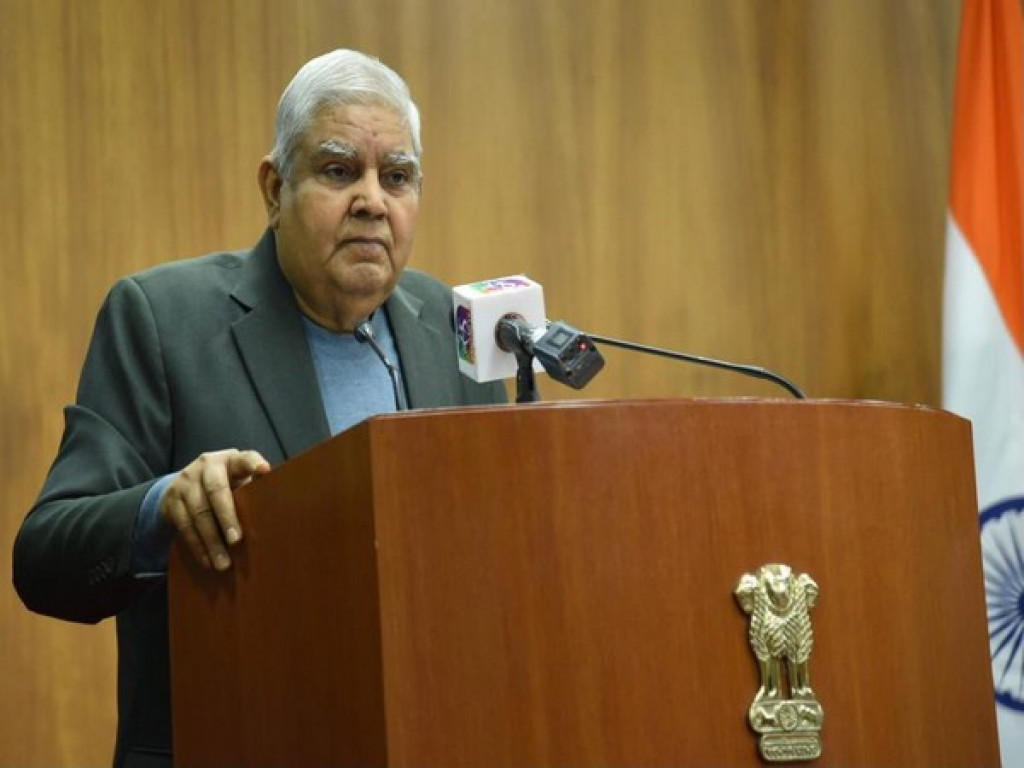


Vice-President Jagdeep Dhankhar's speech at the 83rd foundation day of the Council of Scientific and Industrial Research highlights the importance of research and development in advancing science. He emphasizes the need to find answers to unanswered questions and the potential for growth and innovation in this field. This contribution will help in scaling up the work of IIT Madras and promoting scientific advancement globally.
EKINOPS S.A.'s Brazil Research and Development
EKINOPS S.A., a leading supplier of optical transport and network products, has established a research and development (R&D) center in Brazil. The center, located in the state of São Paulo, will focus on developing innovative solutions for the Brazilian telecommunications market.
EKINOPS's decision to invest in Brazil is a testament to the country's growing importance in the global telecommunications industry. Brazil is home to one of the world's largest and fastest-growing telecom markets, with a rapidly expanding demand for broadband services.
The R&D center will be staffed by a team of experienced engineers and researchers. The team will work on a range of projects, including:
EKINOPS's investment in Brazil is a significant step in its growth strategy. The company is committed to providing its customers with the latest and most innovative telecommunications solutions. The R&D center in Brazil will play a key role in helping EKINOPS to achieve this goal.
Vice-President Jagdeep Dhankhar's Speech at the 83rd Foundation Day of the Council of Scientific and Industrial Research (CSIR)
Vice-President Jagdeep Dhankhar recently spoke at the 83rd foundation day of the Council of Scientific and Industrial Research (CSIR). In his speech, Dhankhar emphasized the importance of research and development (R&D) in advancing science.
Dhankhar noted that R&D is essential for finding answers to unanswered questions and for driving growth and innovation. He also stressed the need for scientists and researchers to collaborate with industry and other stakeholders to ensure that their work has a real-world impact.
Dhankhar's speech was well-received by the scientific community. Many researchers and scientists believe that the government is starting to recognize the importance of R&D and that this could lead to increased funding and support for scientific research in India.
Top 5 FAQs and Answers Related to Current and Past Events of EKINOPS S.A.'s Brazil Research and Development and Vice-President Jagdeep Dhankhar's Speech at the 83rd Foundation Day of the CSIR
The R&D center is a sign of EKINOPS's commitment to the Brazilian telecommunications market. The center will help EKINOPS to develop new and innovative solutions that are tailored to the needs of Brazilian customers.
The goals of the R&D center include developing new optical transport technologies, optimizing existing EKINOPS products for the Brazilian market, and creating new applications and services for the telecommunications industry.
Vice-President Dhankhar's speech highlights the importance of R&D in advancing science and driving growth and innovation. His speech is a sign that the government is starting to recognize the importance of scientific research in India.
The key points of Dhankhar's speech include the importance of R&D, the need to find answers to unanswered questions, the potential for growth and innovation in the field of scientific research, and the need for collaboration between scientists, researchers, industry, and other stakeholders.
Dhankhar's speech could lead to increased funding and support for scientific research in India. It could also encourage greater collaboration between scientists, researchers, industry, and other stakeholders. This could help to accelerate the pace of scientific progress in India and lead to the development of new and innovative technologies that benefit the Indian people.

In a recent family vlog, Indian celebrity couple Shoaib Ibrahim and Dipika Kakar shared their "natural" hair care routine for their son, using a homemade mask made with rice flour, flax seeds, and coconut oil. However, experts warn that what works for adults may not be suitable for babies, whose sensitive skin and scalp could react to the ingredients. While the ingredients may improve hair texture, they do not necessarily promote hair growth. Instead, a healthy diet and good scalp care are more important in maintaining healthy hair.

A recent consumer study has found multiple brands of soft contact lenses in the U.S. to contain "forever chemicals" that can be harmful to both the body and the environment. The study, conducted by the nonprofit organization Environmental Health Sciences, tested 18 varieties of popular contact lenses and found all of them to contain markers for PFAS. Brands such as Acuvue, Alcon, and CooperVision were among the list of affected products. This news serves as a cautionary lesson on the potential risks of overusing contact lenses.

On the birth anniversary of Dr. APJ Abdul Kalam, the ‘Missile Man’ of India, tributes pour in on social media celebrating his life, vision and impact. A visionary scientist, inspiring leader and true patriot, Dr. Kalam's humility, compassion and constant interaction with students continue to inspire generations. His tireless efforts in defense, science and youth empowerment have strengthened India's path towards self-reliance and his legacy continues to motivate young minds to dream big and work hard for the nation.

Recent studies have found that extreme heat, particularly when combined with high humidity, can have a significant impact on mental health. A study in India showed that when wet bulb temperature exceeded 27°C, the probability of reporting severe depression increased by 0.5%, even when the temperature was slightly lower. This finding is consistent with global reviews that have linked high temperatures to mood disorders, increased hospital admissions for psychiatric conditions, and even elevated suicide risk. The Lancet has also published evidence that rising temperatures worldwide are a growing threat to emotional and cognitive health.

In a meeting with university officials in Udaipur, Rajasthan Governor Hari Bhau Bagde stressed the importance of incorporating India's ancient knowledge traditions into academic research. He highlighted the deep repository of knowledge in India since ancient times and urged scholars and scientists to draw upon this tradition in their work. Bagde also suggested making ancient texts available in university libraries for study and research purposes, in order to shape the intellectual abilities and love for the nation among the younger generation.

John Clarke, Michel H. Devoret, and John M. Martinis have been awarded the 2025 Nobel Prize in Physics for their pioneering research into quantum mechanical tunnelling. Their discovery has opened new possibilities for quantum technologies, and will be formally presented on December 10, the anniversary of Alfred Nobel's death. This announcement follows the tradition of recognizing transformative contributions to science, and the award carries a prestigious prize of 11 million Swedish kronor.

The US-Japanese trio of Mary E Brunkow, Fred Ramsdell, and Shimon Sakaguchi have won the 2025 Nobel Prize in physiology or medicine “for their discoveries concerning peripheral immune tolerance". Through their research, they have shown how the immune system is kept in check and why serious autoimmune diseases do not affect everyone. Sakaguchi found a new class of T cells, while Brunkow and Ramsdell discovered the explanation behind a specific mouse strain's vulnerability to autoimmune diseases. Together, they have significantly advanced our understanding of immunology and autoimmune diseases.

Indian astronaut Shubhanshu Shukla, who recently completed a 20-day space mission, shared his insights and experiences at the convocation ceremony of Dr. APJ Abdul Kalam Technical University. He highlighted the importance of patience, focus, and the inevitability of change in achieving success, and urged the graduating class to actively contribute to shaping a fearless and ambitious India.

The Regional Meteorological Centre (RMC) in Chennai has issued a weather alert for parts of Tamil Nadu, with thunderstorms and light to moderate rainfall expected on Saturday. The alert was issued due to the strengthening of a cyclonic circulation in the Bay of Bengal, which is likely to intensify and form a low-pressure area. The system is expected to affect Tamil Nadu, Puducherry, and Karaikal, with some areas experiencing heavy rainfall and gusty winds. The public is advised to stay updated and take precautions, especially in hilly and western districts.

As a step towards advancing India's deep-sea research capabilities, the Union Science Minister announced a landmark contract with the International Seabed Authority to conduct mineral exploration in the Indian Ocean for the next 15 years. This move will not only help India in expanding its scientific knowledge about the deep sea but also has the potential to strengthen its position as a leading player in the international seabed mining industry.